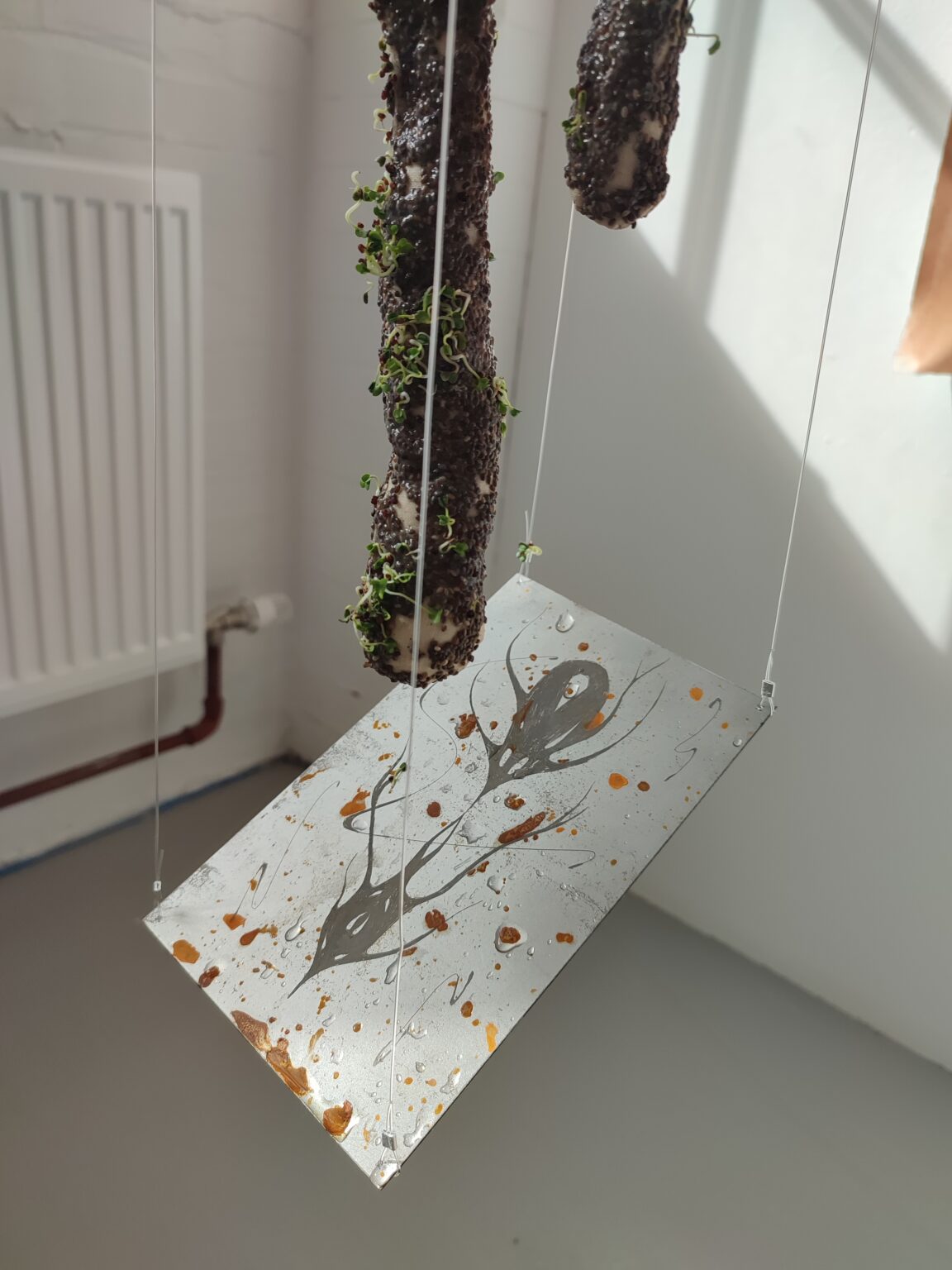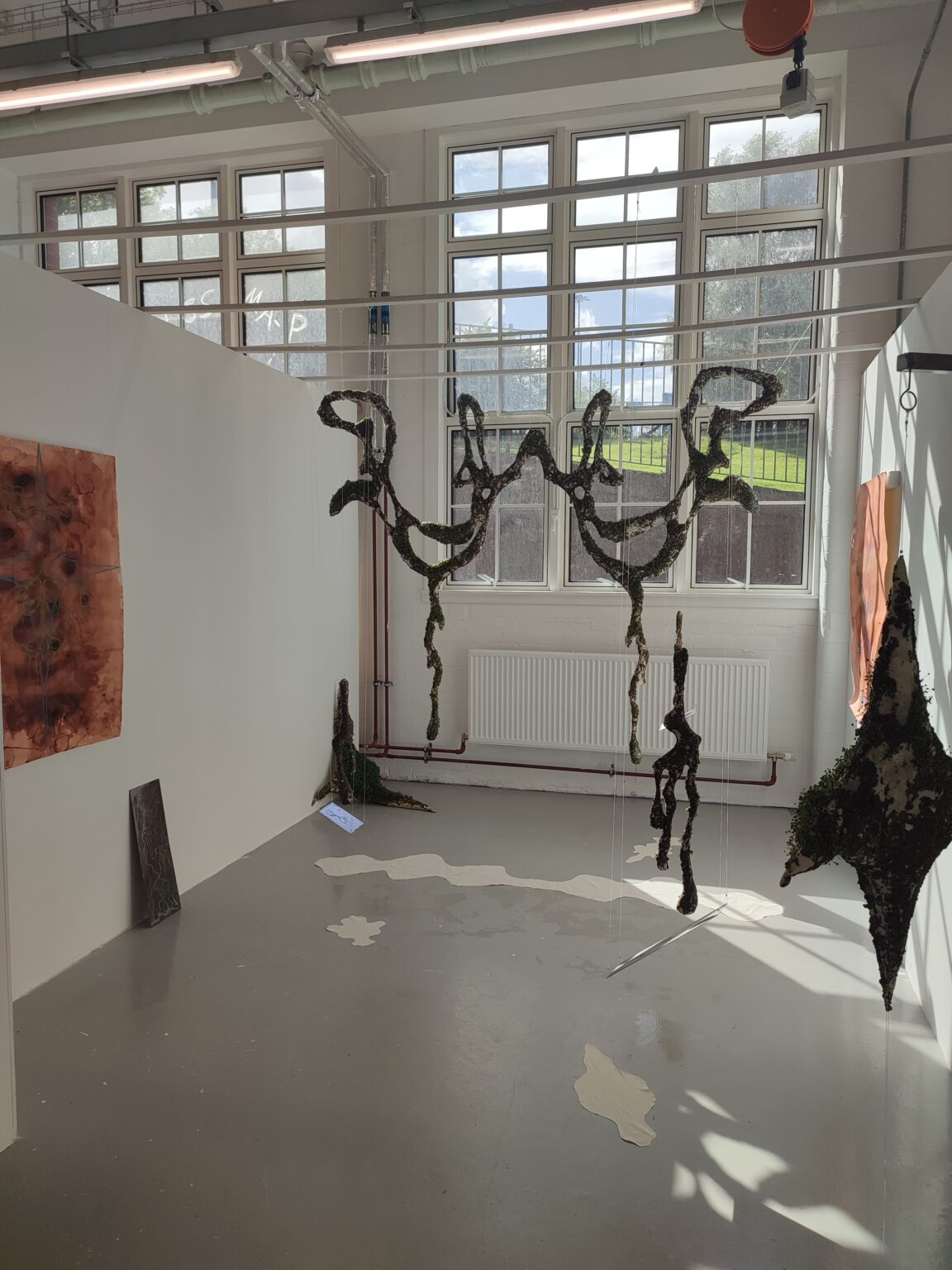Adriyana (Adriana Duarte Costa) (she/her)

Adriyana, 23, (Maputo, Mozambique), talked to grass in her free time growing up.
When she moved to Lisbon at 16 and started studying Textiles, she began to understand the importance of our connection to materials and how crucial it is to establish non-hierarchical relationships between them. Materials come from Nature, we must give Her our gratitude. A quote that really inspires her work is: “Being creative is not so much the desire to do something as the listening to that which wants to be done: the dictation of materials” – Anni Albers.
Adriyana believes in actively practising and living by the principles that humans are not “at the top of the food chain”. Humans are very object-oriented, tool-oriented beings, and Adriyana believes this is because we are incredibly fragile beings and we must understand that, so that we respect our environment and the materials and tools that we use.
She studied Textile Design BA in The Royal Academy of Arts in The Hague, where she explored immense possibilities of developing materials from scratch. Adriyana is now doing her Master’s in Fine Art and still talking to grass, but also the sprouts she grows in her work. In her practice she tries to understand, a little bit more, each day, how truly symbiotic we (half human/half microbiome) are with nature.
Works

Alchemical Entanglements
It may not immediately look like it, but this whole installation is alive.
Entangled creatures are drawn in a sea of living pigments that have a life cycle and will fade overtime. These creatures were born through an exercise of observing different behaviours and living beings in nature, which were later entangled into a series of speculative beings.
The living sculptures, breathing throughout this space, were also born from an interweaving of different elements from nature and brought to life by the growing plants that set roots with them. Once watered, the excess water drips onto the etched compositions on steel, and with its rust and water, this interaction affects the textiles on the floor, allowing its seeds to grow and its colours to change.
In this environment of living bodies and materials, you are invited to take a step back from your perception of individuality and to appreciate how truly entangled life is.











